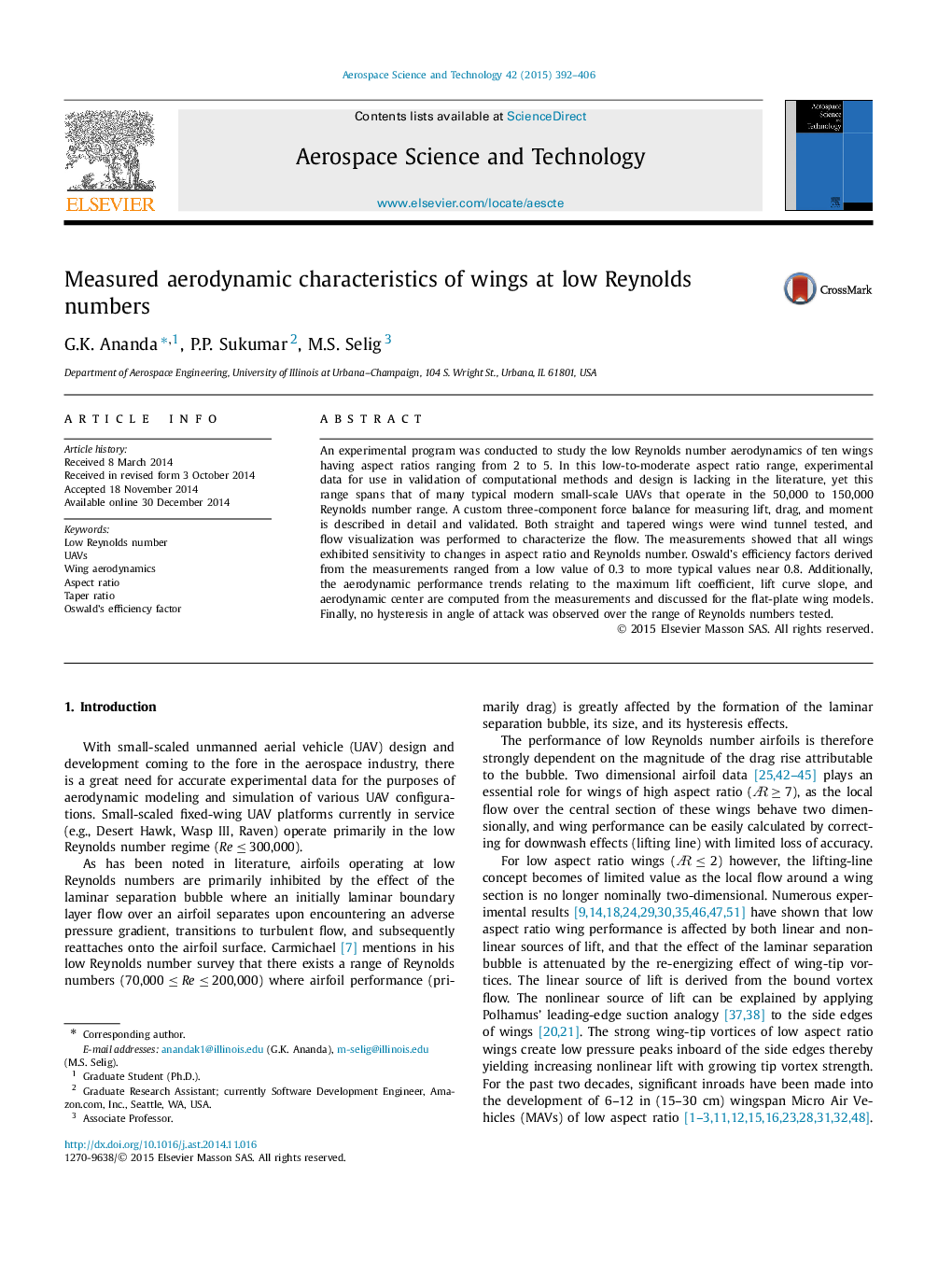| Article ID | Journal | Published Year | Pages | File Type |
|---|---|---|---|---|
| 1717938 | Aerospace Science and Technology | 2015 | 15 Pages |
An experimental program was conducted to study the low Reynolds number aerodynamics of ten wings having aspect ratios ranging from 2 to 5. In this low-to-moderate aspect ratio range, experimental data for use in validation of computational methods and design is lacking in the literature, yet this range spans that of many typical modern small-scale UAVs that operate in the 50,000 to 150,000 Reynolds number range. A custom three-component force balance for measuring lift, drag, and moment is described in detail and validated. Both straight and tapered wings were wind tunnel tested, and flow visualization was performed to characterize the flow. The measurements showed that all wings exhibited sensitivity to changes in aspect ratio and Reynolds number. Oswald's efficiency factors derived from the measurements ranged from a low value of 0.3 to more typical values near 0.8. Additionally, the aerodynamic performance trends relating to the maximum lift coefficient, lift curve slope, and aerodynamic center are computed from the measurements and discussed for the flat-plate wing models. Finally, no hysteresis in angle of attack was observed over the range of Reynolds numbers tested.
